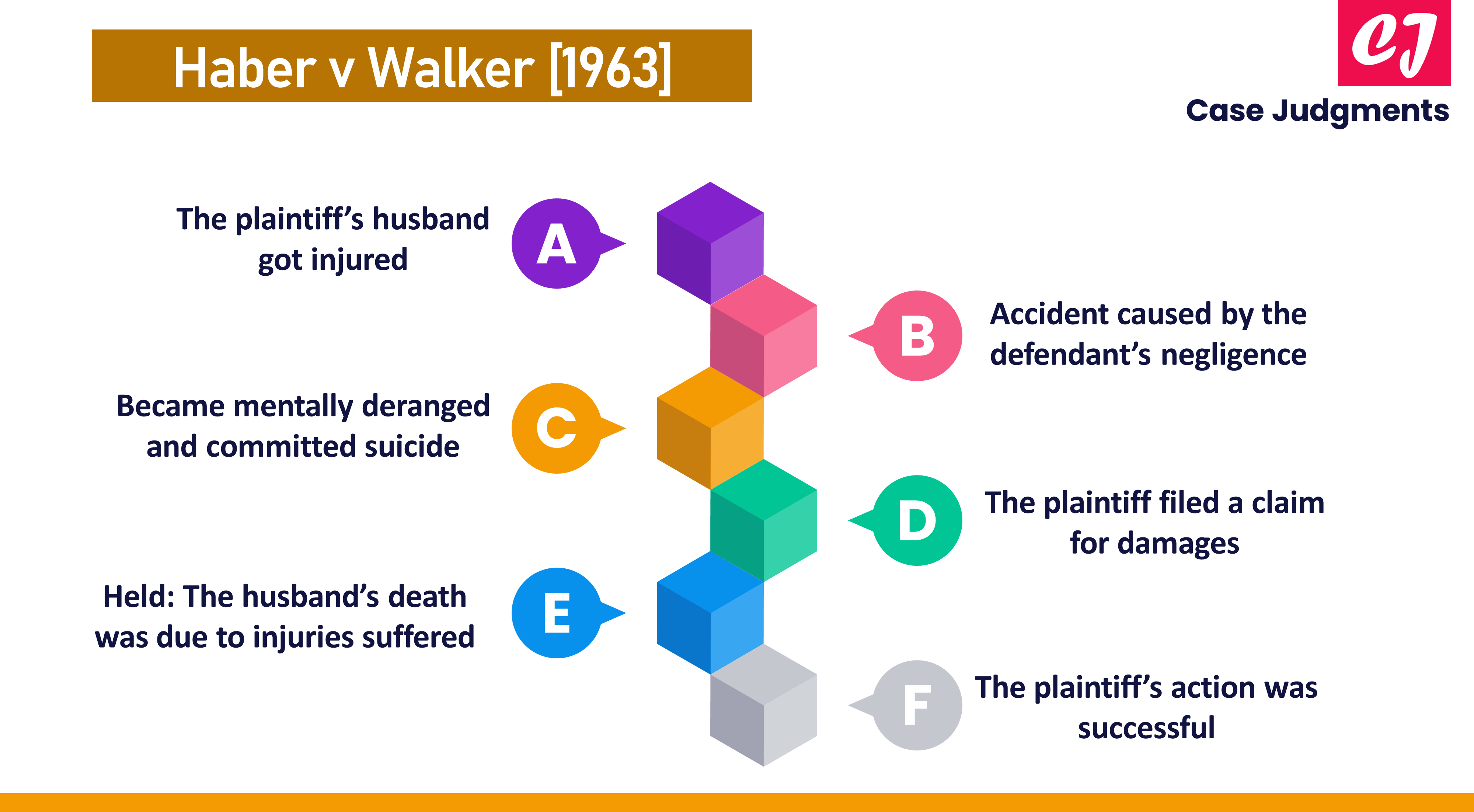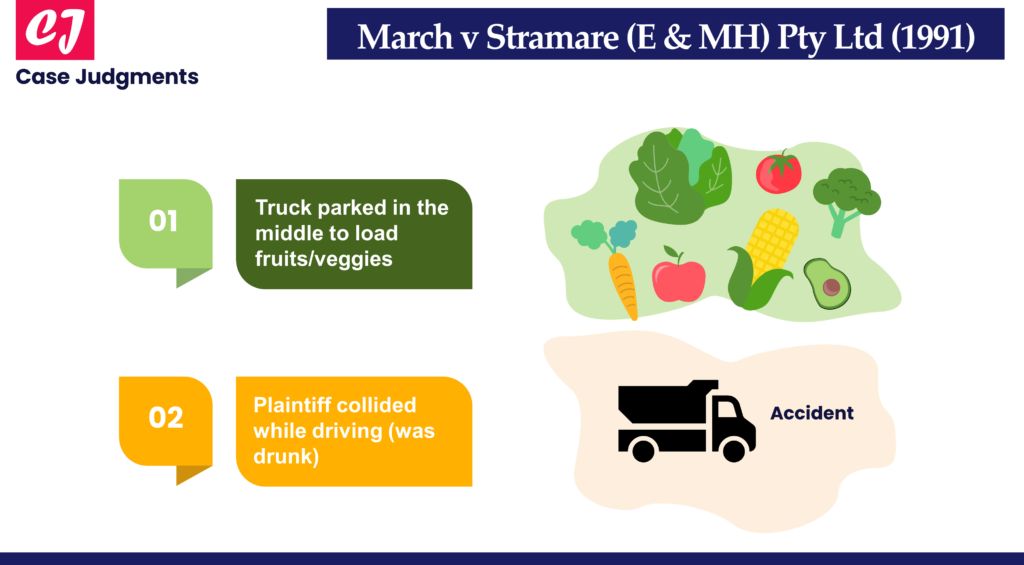
A Case Summary of Haber v Walker [1963]
Haber v Walker [1963] is a tort law case on issues related to causation, foreseeability and novus actus interveniens. Here, as a result of the defendant’s negligence, the plaintiff’s husband suffered serious injuries and subsequently died. The question was whether she was entitled to a dependency claim consequent upon her husband’s death.
Given below are the case details:
| Case name & citation: | Haber v Walker [1963] VR 339 |
| The concerned Court: | Supreme Court (Vic, Australia) |
| The bench of judges: | Lowe and Smith JJ, Hudson J dissenting |
| Area of law: | Negligence, causation, foreseeability, novus actus interveniens |
Facts of the case (Haber v Walker)
In Haber v Walker [1963], an action was brought by the plaintiff under Part III of the Wrongs Act 1958 as administratrix of the deceased person’s estate. The plaintiff’s husband had suffered serious injuries in a motor car accident caused by the negligence of the defendant. As a result, he became mentally deranged and subsequently committed suicide allegedly due to the injuries sustained in the accident. The plaintiff sought to recover damages resulting from the deceased’s death.
Initial decision
The jury found that the husband’s death was caused by the accident due to the defendant’s negligence. But they also found that the defendant could not reasonably be expected to have foreseen that the husband would die by suicide. The jury also found that the deceased was mentally incapacitated at the time of suicide.
The defendant appealed to the Full Court of the Supreme Court of Victoria.
Judgment of the Court in Haber v Walker
The appeal was dismissed and the Court upheld the initial judgment in favor of the plaintiff. Applying the principles of law to the findings of the jury, the majority held that the defendant’s negligence caused the deceased’s death.
The Court discussed the principles of causation, stating that an intervening occurrence could sever the causal connection between the defendant’s wrongful conduct and harm caused to the deceased if it was a voluntary human action or an independent event.
The central issue was whether the deceased’s act of suicide could be regarded as a voluntary act so as to break the chain of causation. The Court found that if the deceased was legally insane when he committed suicide and if this insanity resulted directly from the injuries inflicted by the defendant’s negligence, then the causal connection remained unbroken. The Court noted that for an act to be voluntary, it should involve a free choice and not be made under substantial pressure created by the wrongful act.
Another issue before the Court was whether the deceased’s death by suicide was reasonably foreseeable by the defendant. On this, the approach taken by the Full Court of the Supreme Court of Victoria was that the majority (Lowe and Smith JJ) concluded that once it was established that the defendant’s wrongful act had caused the deceased’s death, it was not necessary to demonstrate that the death was a reasonably foreseeable consequence of the defendant’s conduct.
Dissenting view
Hudson J. strongly dissented from the majority judgment. He stated that the requirement of reasonable foreseeability of damage in negligence actions is essential. It is crucial to demonstrate that the harm (death) was something that a reasonable person would have foreseen as a possible outcome of their negligent actions.
Conclusion
The case highlighted conflicting views on the role of foreseeability and causation in negligence actions, with some judges arguing for a flexible approach and others advocating for strict foreseeability requirements.
Despite the dissenting view, the end result in this case was that the claim of the plaintiff was successful.
List of references:
- https://www.qlrc.qld.gov.au/__data/assets/pdf_file/0004/372937/wp56.pdf
- https://archive.sclqld.org.au/qjudgment/2001/QCA01-271.pdf
- http://www5.austlii.edu.au/au/journals/MelbULawRw/1964/5.pdf
YOU MIGHT ALSO LIKE:
MORE FROM TORT LAW:

